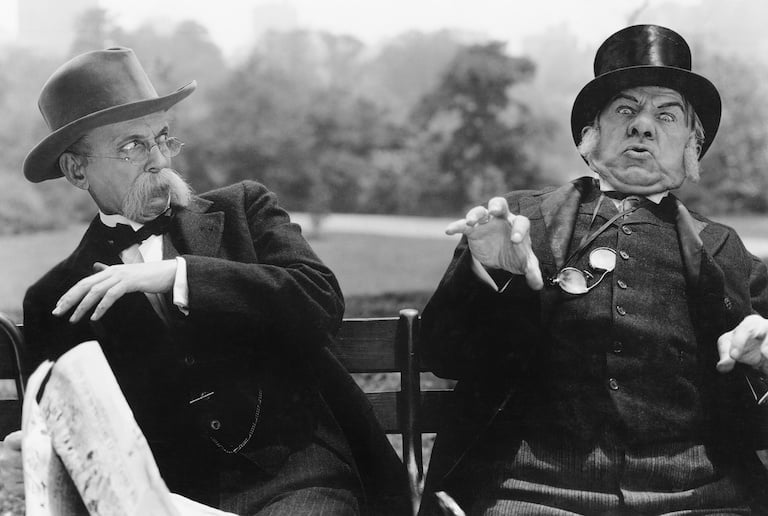Have you ever searched for an airfare only to find that the price for a particular flight has significantly increased compared with when you searched a few days later?
Or have you noticed that some people are paying less to receive access to the same subscription service that you pay for? What about that time when you could have bought the same pair of jeans a day later then you did when it was on special at the half-yearly clearance?
These are all examples of price discrimination, where a business charges a different price to different groups of people for the same product or service. There are three classic types of price discrimination:
- First-degree discrimination is when a business charges the maximum possible price for each unit sold according to each individual customer’s ability to pay
- Second-degree discrimination is when a business charges a different price for different quantities purchased by a customer
- Third-degree discrimination is when businesses charge different prices to different groups of customers
There are some prerequisites for a business to implement first-degree discrimination.
Firstly, it’s ideal for the business to operate in a monopoly market where it controls supply. If there are multiple suppliers, it’s possible the customer will switch to another provider.
Secondly, the business needs to know the maximum amount the customer is willing to pay for their product or service. Having an intimate understanding of the customer is key.
Thirdly, the business must prevent the resale of products or services by the customer to other customers, otherwise there may be instances where their customer makes a profit through reselling.
Fourthly, each customer has a different responsiveness to price changes that reflect their willingness to pay and preferences.
Examples of second-degree discrimination including buying three items and getting the fourth free or purchasing six items to get 20% off the entire order. While second-degree discrimination is often associated with ecommerce businesses to drive economies of scale thanks to bulk purchases, it can also be applied to software businesses.
Have you ever committed to subscribe for one year in advance instead of paying the normal price monthly because you get a 20% discount? Or what about paying a little more so you get access to the family-edition so instead of a single user account you can now have four users from your household have the same access?
Compared with other types of price discrimination, second-degree discrimination doesn’t require detailed segmentation of customers. It’s also effective at stimulating demand as bulk discounts can encourage customers to purchase more than usual. Tools such as coupons, loyalty cards and bulk offers are often associated with second-degree discrimination.
You will have experienced third-degree discrimination when going to the movies where the adult ticket is $20, the child ticket is $10, the youth ticket is $14, and the senior ticket is $16.
All people are seeing the same movie in the same theatre at the start and finish times, but the theatre operator has decided that to maximise their revenue, it should charge its customers different prices and discriminate based on age.
How to segment customers
There are many ways to segment customers.
In Australia, the banks are famous for this where there the customer is charged a premium for loyalty! When banks are keen to write new home loans, they offer discounts on their standard interest rates to attract new customers. As these new customers become loyal and longstanding, the discounts decrease, with the better rates offered to the bank’s new customers.
That’s why it pays to shop around every few years for a better deal.
While price discrimination is technically based on a business selling the same product or service to different customers, it is often used in conjunction with product differentiation to maximise the business’ unit economics. Product differentiation describes how business distinguish their product or services from competitors.
Horizontal product differentiation occurs when, at the same price, only some customers will choose one product with the rest choosing other products. Vertical product differentiation occurs when, at the same price, all customers prefer one product over the others.
Adding product differentiation
A classic combination of price discrimination and product differentiation can be seen when purchasing different software.
For its classic sales and service product, Salesforce has four product versions: essentials, professional, enterprise and unlimited. All products are sold on a per user per month basis and are charged annually. The essentials product is $35 per user per month and has three key features. The professional product is $140 with five key features. That’s a step up of $105!
The enterprise product is $245 with the same five key features but is deeply customisable. The unlimited product is $455 with seven key features being a step up of $210.
Salesforce has cleverly segmented its customers into different groups (small, medium and large enterprises) and provided differentiated offerings (the mid-range products have pipeline and forecast management features but only the top-range product has 24/7 support and configuration services) that are distinguished from each other and their competitors.
By using both price discrimination and product differentiation, Salesforce are maximising the revenue they are generating from their customers.
How might you be able to use price discrimination and product differentiation to provide better products to your customers and increase your revenue?
- Benjamin Chong is a partner at venture capital firm Right Click Capital, investors in bold and visionary tech founders.




















Trending
Daily startup news and insights, delivered to your inbox.